“Sweden’s climate, a blend of oceanic and subarctic influences, serves as a living laboratory of climatic extremes—where the stark contrasts between long, cold winters and brief, sunlit summers reveal nature’s remarkable ability to adapt and endure.” — Dr. Lars Jonsson, Swedish Climatologist
I have been living in Sweden for five years and see that the weather changes in different places. In the south, it stays cool. In the middle, it gets warm and cold. In the north, it gets very cold.
The country has snow in winter and green trees in summer. In the north, snow stays for a long time. I wore warm clothes and boots. In summer, I wore light clothes and walked outside a lot. The weather felt fresh and nice.
Some people come to Sweden to play in the snow. Others come to enjoy the sunshine and nature. I liked both.
It helps to know the weather before coming. That way, you can enjoy the trip more and bring the right clothes.
Enjoying Swedish Climate
Understanding the climate in Sweden involves recognizing its unique geographical features and seasonal changes. This country is known for its stunning landscapes and diverse weather patterns, which can range from frigid winters to surprisingly warm summers. Let’s dive into the factors that shape the climate across this Nordic nation.
Geographic Influence On Weather
Sweden’s geography plays a crucial role in its climate. The country stretches from the temperate southern regions to the Arctic north, leading to various weather conditions.
The southern part enjoys a temperate oceanic climate, influenced by the warm Gulf Stream.
Central Sweden exhibits a mix of oceanic and continental climates, resulting in more extreme temperatures.
In the north, you’ll find a sub-Arctic climate with long, harsh winters.
These geographic distinctions create diverse microclimates. Depending on where you are, you might experience mild temperatures while just a few hundred kilometers away, it could be a winter wonderland. Your travel experiences in Sweden will vary greatly based on location and time of year.
Seasonal Variations
Sweden experiences four distinct seasons, each bringing its own charm and challenges. Winters are long, cold, and often snowy, particularly in the north.
Winter (December to February): Expect temperatures to drop below freezing, especially in the north. Snow is common, making it perfect for skiing and winter sports.
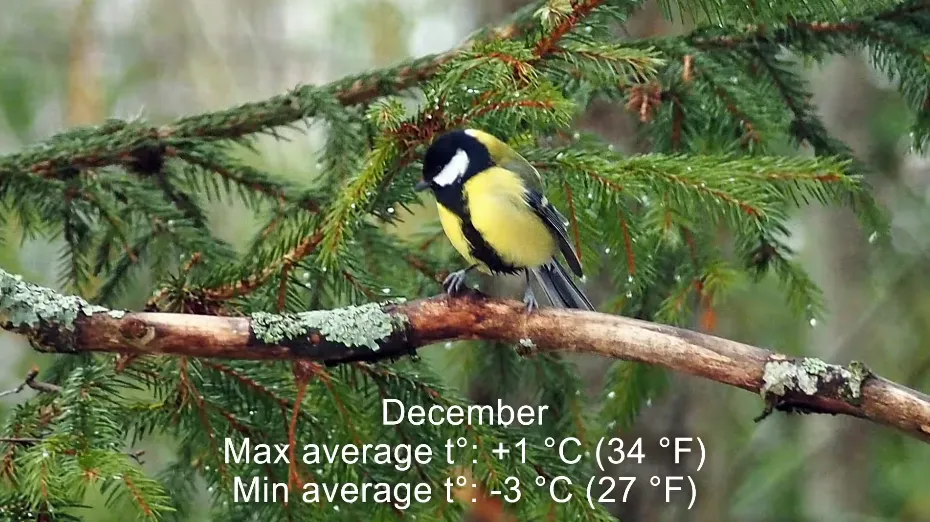
December in Winter
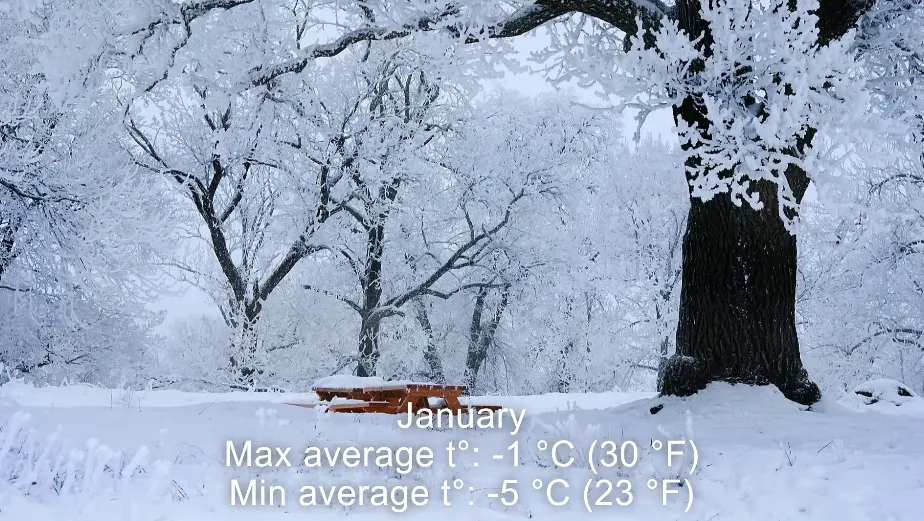
January in Winter
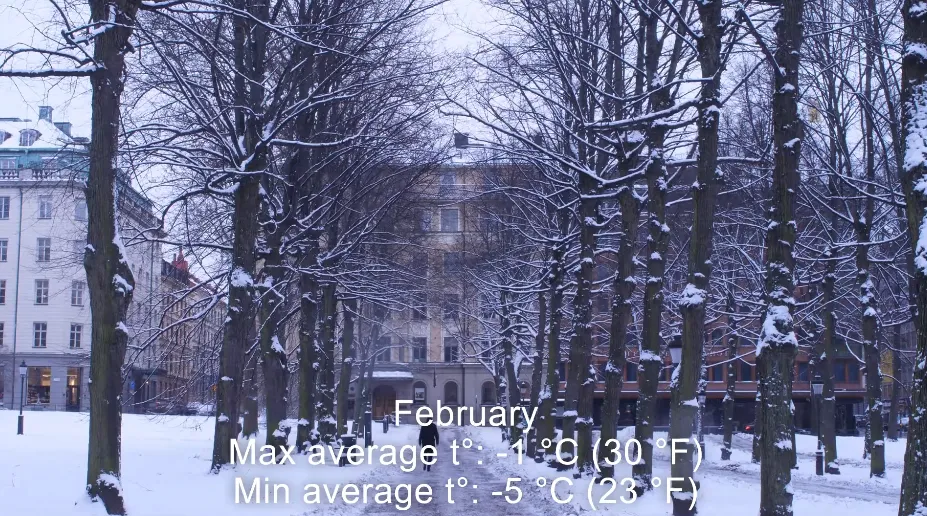
February in Winter
Spring (March to May): As the snow melts, temperatures begin to rise. This season is marked by blooming flowers and longer daylight hours.
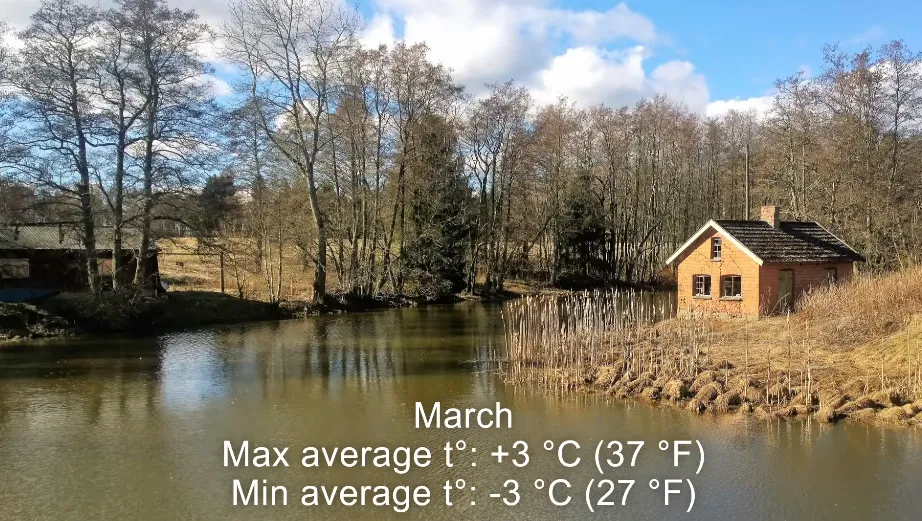
March in Spring

April in Spring

May in Spring
Summer (June to August): Surprisingly warm, with temperatures often reaching the mid-20s Celsius (70s Fahrenheit). This is the ideal time for outdoor activities, like hiking and swimming.
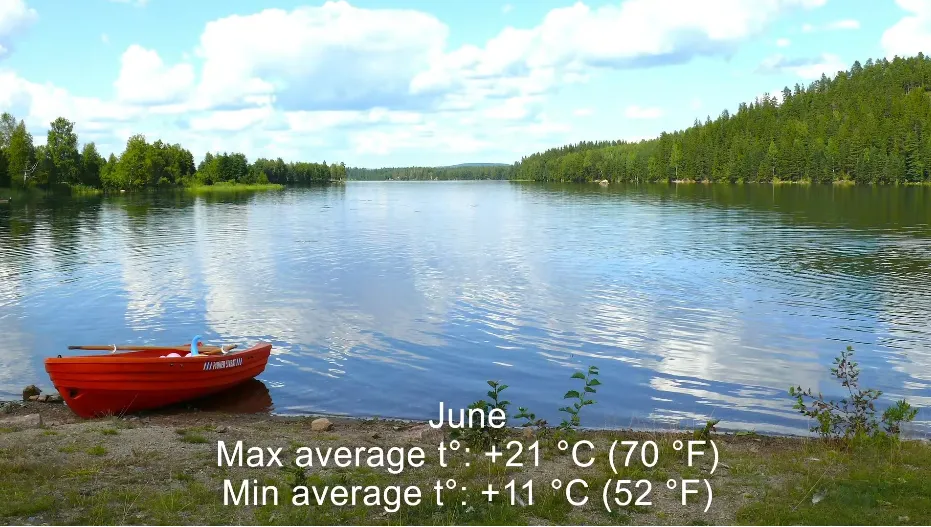
June in Summer
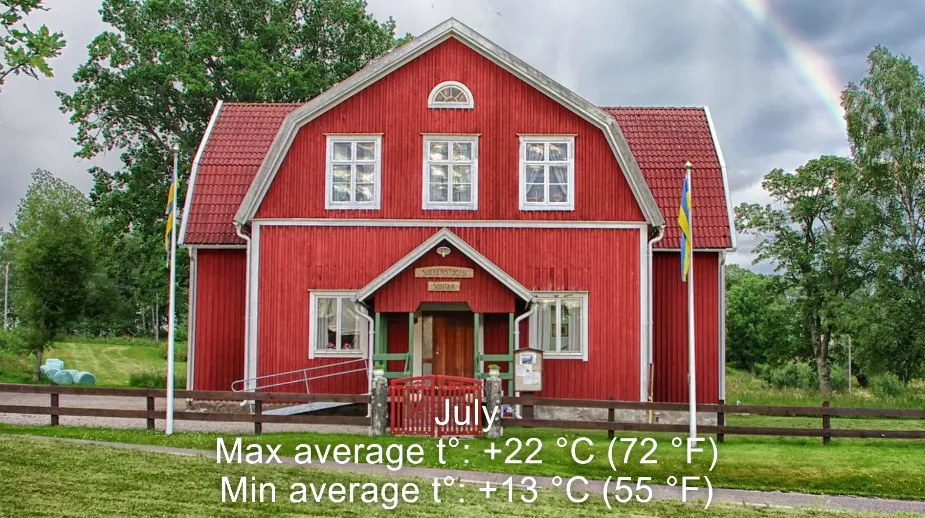
July in Summer
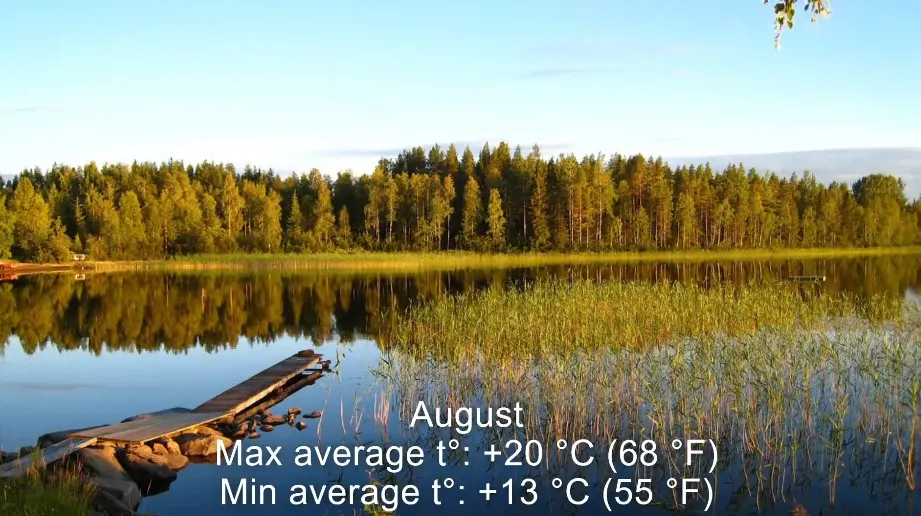
August in Summer
Autumn (September to November): A beautiful time to visit, with colorful foliage. Temperatures start to drop, and the days become shorter.
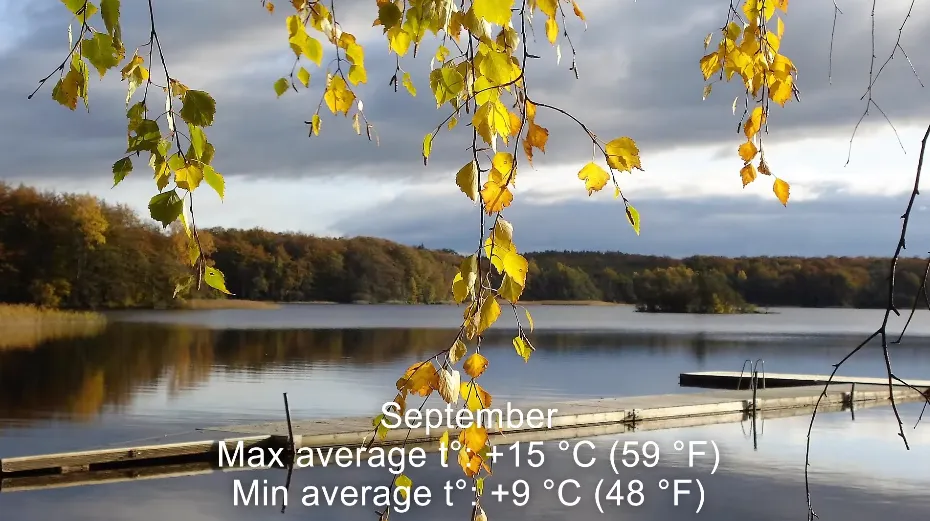
September in Autumn
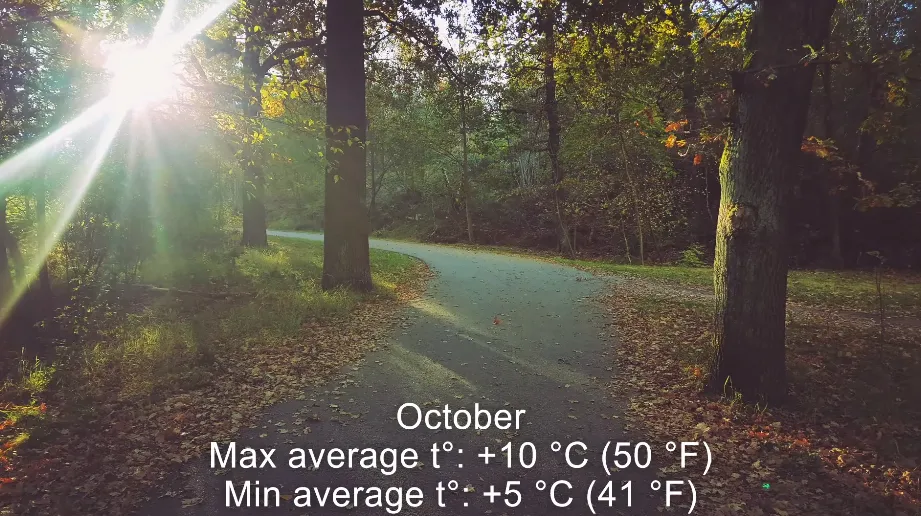
october in Autumn
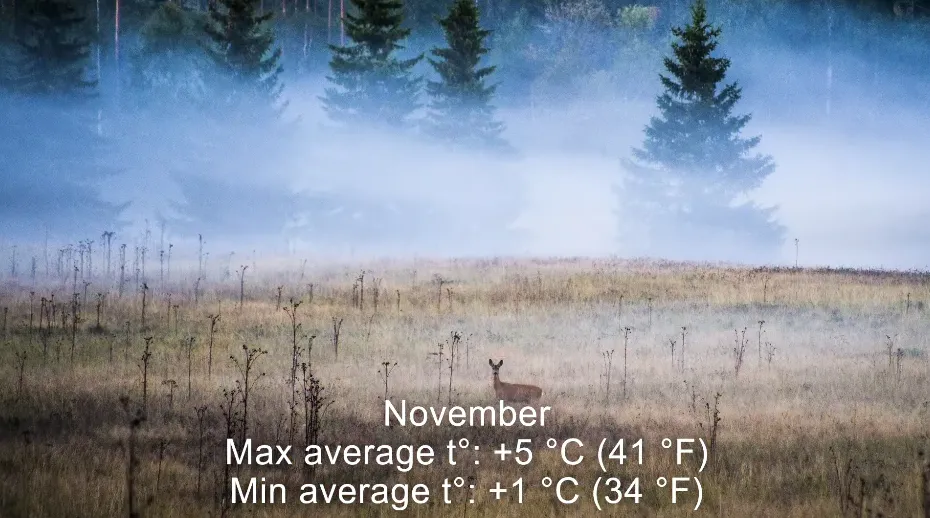
November in Autumn
Whether you’re drawn to the cozy winters or the vibrant summers, Sweden’s climate certainly has something for everyone. Your adventure awaits, no matter when you choose to visit!
Temperate Or Extreme: Understanding Sweden’s Weather
Sweden’s climate often surprises those unfamiliar with its geography. Many think of Sweden as a cold, snowy land. However, the reality is more complex. The country offers both temperate and extreme weather conditions. Understanding these differences is key to grasping what to expect throughout the year.
What season do you think you’d enjoy the most in Sweden? Each one offers its own unique experiences and activities that can cater to different preferences.
The southern regions experience milder winters. On the other hand, northern areas endure long, harsh winters. This duality shapes the Swedish experience of weather significantly.
Influence Of The Gulf Stream
The Gulf Stream plays a crucial role in Sweden’s climate. This warm ocean current brings milder temperatures to the country. It affects the coastal areas, making winters less severe. The southern parts enjoy a temperate oceanic climate due to this influence.
In contrast, the northern regions are not as sheltered. They experience colder winters. The Gulf Stream’s warmth does not reach these areas. Thus, the north faces long, snowy seasons.
Comparison With Neighboring Countries
Sweden’s climate can be compared with its neighbors. Norway shares a similar coastal climate, but it often experiences harsher winters. Finland, on the other hand, has colder temperatures than Sweden. Its winters are longer and more extreme.
Denmark enjoys a more temperate climate than Sweden. Its winters are milder, thanks to its southern location. Overall, Sweden offers a unique blend of weather influenced by geography and ocean currents.
Winter In Sweden: A Cold Perspective
Sweden experiences a varied climate. Winters are long, cold, and snowy, especially in the north. The south has milder winters, but temperatures can still drop significantly. Overall, Sweden is known for its chilly weather during winter months.
Winter in Sweden: A Cold Perspective Winter in Sweden is a captivating experience, marked by stark contrasts in temperatures and landscapes. The country showcases two distinct winter climates: the frigid north and the comparatively mild south. Whether you’re skiing in the snow-laden mountains or enjoying cozy moments in a city café, understanding the winter conditions can enhance your visit.
Sub-arctic Conditions In The North
Northern Sweden embodies sub-Arctic conditions, where winter reigns supreme. Temperatures often plunge below freezing, sometimes reaching as low as -30°C (-22°F). This region experiences long nights and short days, creating a magical atmosphere. The snow cover can last for six months or more, providing a stunning backdrop for winter sports and activities. You might wonder how the locals cope with such extreme conditions. Many embrace the winter by engaging in outdoor activities like ice fishing, snowmobiling, and skiing.
Mild Winters In The South
In contrast, southern Sweden enjoys a milder winter climate. Cities like Malmö and Gothenburg experience average temperatures ranging from -1°C to 4°C (30°F to 39°F). Snowfall is less frequent, and when it does occur, it usually melts quickly. This means you can enjoy winter without the extreme cold that grips the north. Have you ever considered how this variation affects daily life? In the south, people often opt for leisurely strolls in parks or warm gatherings in cafés, making the season feel more social and accessible. Whether you find yourself in the snowy north or the milder south, winter in Sweden offers a unique charm that beckons exploration. What aspects of winter do you most look forward to experiencing?

Credit: en.wikipedia.org
Summer Warmth: Sweden’s Sunny Side
Sweden offers a delightful contrast in its climate, especially during the summer months. Known for its stunning landscapes and picturesque cities, the country basks in a warm glow that invites both locals and tourists to explore its beauty. Let’s dive into Sweden’s sunny side and discover what summer has in store.
Temperature Ranges During Summer
Summer in Sweden typically spans from June to August. During this period, temperatures can range from a pleasant 20°C to 25°C (68°F to 77°F) in most regions.
In southern cities like Malmö and Gothenburg, you might even experience days that hit the 30°C mark (86°F). If you venture north to places like Umeå, expect temperatures to be slightly cooler, averaging around 15°C to 20°C (59°F to 68°F).
These warm days make it perfect for outdoor activities. Whether it’s hiking, cycling, or enjoying a picnic in the park, summer in Sweden feels just right.
Long Daylight Hours
One of the most remarkable aspects of Swedish summers is the long daylight hours. The phenomenon known as the “midnight sun” means that in certain northern regions, the sun doesn’t set at all.
Even in the south, you can enjoy up to 18-20 hours of daylight. This abundance of sunlight can energize your day, pushing you to explore more.
Have you ever experienced a sunset that lasts for hours? It’s a surreal experience that many travelers cherish. Imagine sipping coffee on a terrace at 10 PM, still basking in the golden light!
Summer warmth in Sweden is not just about the temperatures; it’s about the vibrant life that flourishes under the sun. Are you ready to discover the sunny side of Sweden?
Precipitation Patterns: Snow And Rainfall In Sweden
Sweden’s climate is characterized by its unique precipitation patterns, which significantly influence daily life and outdoor activities. From the snowy winters to the rainfall in summer, understanding these patterns helps you prepare for your visit. Let’s dive into how snow and rain shape Sweden’s weather throughout the year.
Snow Cover In Winter
Winters in Sweden are nothing short of magical, especially if you love snow. In the northern regions, snow cover can reach impressive depths, often exceeding a meter. The southern parts also experience snowfall, but it’s generally less intense.
Imagine waking up to a landscape blanketed in white. The snow typically begins falling in late November and can last until April, offering excellent opportunities for winter sports. Whether you’re skiing in Åre or building a snowman in your backyard, the winter wonderland is hard to beat.
Have you ever experienced the tranquility of a snowy evening? The stillness that accompanies fresh snow creates a serene atmosphere, making winter in Sweden truly special.
Average Rainfall Through The Year
Rainfall in Sweden varies significantly depending on the region and season. The southern regions experience more precipitation, with an average of 600-800 mm per year, while northern areas see about 400-600 mm. Summer months are typically wetter, with June and July being the rainiest.
As you plan your trip, consider packing an umbrella for those summer showers. The rain nourishes Sweden’s lush landscapes, making them vibrant and green. The contrast between the bright colors and the rain can be breathtaking.
Have you noticed how a rainy day can be refreshing? The cool air and the sound of raindrops can create a cozy atmosphere that invites you to explore local cafes or museums.
Understanding Sweden’s precipitation patterns can enhance your experience. Whether you’re enjoying snowy landscapes or colorful summer blooms, being prepared allows you to make the most of your time in this beautiful country.
Regional Climate Variations
Sweden’s climate is as diverse as its stunning landscapes. Regional variations play a significant role in how weather is experienced across the country. From the temperate coasts in the south to the frigid north, each area offers unique climatic conditions that shape daily life and activities.
Southern Sweden’s Oceanic Climate
Southern Sweden enjoys a temperate oceanic climate. This means mild winters and warm summers, with the coastal areas benefiting from the moderating effects of the sea. Cities like Malmö and Gothenburg experience average winter temperatures around 0°C (32°F), making it quite manageable.
Summer can bring pleasant warmth, often reaching 20-25°C (68-77°F). You might find yourself enjoying outdoor cafes or taking long walks in the many parks. The weather here often invites both locals and tourists to explore the vibrant city life and beautiful coastal views.
Central Sweden’s Mixed Influences
Traveling northwards, Central Sweden presents a mixed climate influenced by both oceanic and continental factors. This creates distinct seasonal changes, with colder winters and warmer summers than the south. Cities like Stockholm experience average winter temperatures around -3°C (26°F), while summer highs can reach up to 22°C (72°F).
In Central Sweden, snow can be frequent in winter, transforming the landscape into a winter wonderland. Many locals embrace this by enjoying winter sports such as skiing and ice skating. Have you ever tried ice fishing? It’s a unique experience worth exploring!
Northern Sweden’s Sub-arctic Environment
Further north, the climate shifts dramatically to a sub-Arctic environment. Winters here are long and bitterly cold, with temperatures often dropping below -15°C (5°F). The northern cities, such as Kiruna, can see snowfall lasting from October to May, creating an ideal setting for winter activities.
Summer is brief but can be surprisingly warm, with temperatures occasionally reaching 25°C (77°F). However, don’t be fooled; the days are long, thanks to the phenomenon of the midnight sun. Have you ever witnessed the sun barely dipping below the horizon? It’s a breathtaking sight that makes summer in the north unforgettable.
Understanding these regional climate variations can help you plan your visit to Sweden better. Whether you’re drawn to the lively southern cities or the serene landscapes of the north, each region has its charm and unique weather patterns to offer.
Climate Change And Its Impact On Sweden
Sweden faces significant challenges due to climate change. The country’s climate is shifting. This affects weather patterns, ecosystems, and communities. Understanding these changes is crucial for future planning.
Rising temperatures impact both urban and rural areas. More extreme weather events are becoming common. These changes bring uncertainty and risk to daily life in Sweden.
Recent Trends And Future Projections
In recent years, Sweden has seen warmer winters. Summer temperatures also rise. Scientists predict these trends will continue. By 2050, temperatures may increase by 2-4 degrees Celsius.
Rainfall patterns are changing as well. Some regions may experience heavy rains. Others may face droughts. These shifts will affect agriculture and water supply.
Effects On Swedish Ecosystems
Climate change disrupts Swedish ecosystems. Wildlife faces new challenges. Some species may struggle to survive in changing conditions. For example, fish populations in lakes and rivers may decline.
Forests are also impacted. Tree species may shift northward. This can affect biodiversity and forest health. The delicate balance of these ecosystems is at risk.
Overall, climate change is reshaping Sweden. Communities must adapt to these changes. Understanding impacts is the first step in building resilience.
Best Time To Visit: Traveler’s Guide To Sweden’s Weather
Choosing the best time to visit Sweden depends on your interests. The climate varies greatly across the country. Knowing what to expect helps you plan your trip. Sweden offers unique experiences in every season.
From snowy winters to bright summers, each season has its charm. Tourist seasons attract different crowds and activities. Here’s a guide to Sweden’s weather and when to visit.
Tourist Seasons And Weather
Sweden has four distinct seasons: winter, spring, summer, and autumn. Winter lasts from December to February. Expect cold temperatures and plenty of snow. This season is great for skiing and winter sports.
Spring arrives in March and lasts until May. Temperatures begin to warm up. Flowers bloom, making it a beautiful time to explore cities. Summer, from June to August, is warm and lively. Days are long, and outdoor festivals abound.
Autumn spans September to November. The weather cools down. Fall colors paint the landscape. It’s a quieter time, perfect for enjoying nature.
Activities And Climate Suitability
Winter is perfect for skiing, snowboarding, and ice fishing. Visit ski resorts in Åre or Sälen for thrilling adventures. Spring is great for hiking and exploring national parks. Cities come alive with cultural events and festivals.
Summer invites outdoor activities. Go hiking, cycling, or swimming in lakes. Enjoy music festivals and outdoor dining in cities like Stockholm and Gothenburg.
Autumn suits those who love photography and quiet walks. The crisp air and colorful leaves create stunning views. Each season offers something special for every traveler.
Adapting To Swedish Weather: Local Lifestyle And Customs
Sweden experiences distinct seasons, each shaping daily life. Locals adapt to cold winters and warm summers. They embrace the weather with unique customs and activities. Understanding these aspects can help newcomers feel at home.
Seasonal Activities For Locals
Swedes enjoy outdoor activities all year. In winter, skiing and ice skating are popular. Families often visit the mountains for winter sports. The long summer days invite hiking and swimming in lakes.
During autumn, locals gather mushrooms and berries. This is a cherished tradition that connects them to nature. Spring brings festivals and celebrations, marking the end of winter. These seasonal activities build a strong community spirit.
Clothing And Living In Tune With The Climate
Wearing the right clothing is essential in Sweden. Winter demands warm coats, hats, and boots. Layers are key to staying comfortable in cold weather. In summer, lightweight clothing is common, but a light jacket is wise for cooler evenings.
Homes are designed for energy efficiency. Many use triple-glazed windows to keep warmth in. Swedes also enjoy cozy spaces with candles and soft lighting. This approach creates a welcoming atmosphere, making the most of long winters.
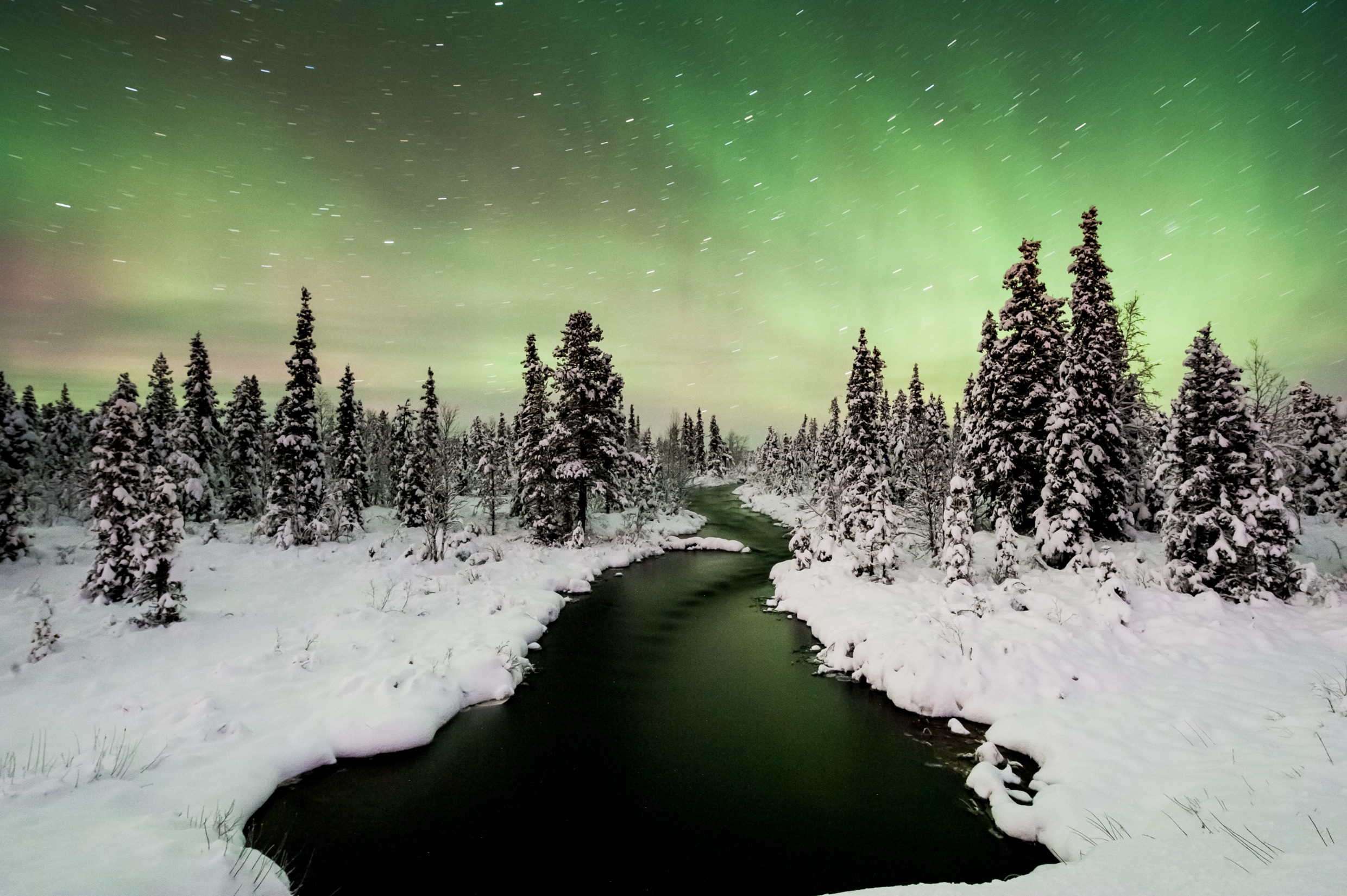
Credit: sweden.se
Myths Vs. Reality: Debunking Swedish Climate Stereotypes
Many people think of Sweden as a land of endless snow and freezing temperatures. This view is shaped by myths and media. In reality, the Swedish climate is diverse. Understanding the truth can change your perspective.
Common Misconceptions About Swedish Weather
One common myth is that Sweden is always cold. While winters can be harsh, summers can be surprisingly warm. In southern Sweden, temperatures can reach 30°C (86°F) during summer. Some believe it snows all year round. However, many areas enjoy a mild climate.
Another misconception is that Swedes never see the sun. While winter days are short, summer brings long, bright days. The sun shines for nearly 18 hours a day in June. This leads to beautiful summer nights.
Many think that all of Sweden is covered in snow. In reality, the northern part experiences more snow than the south. Southern cities like Malmö and Gothenburg have milder winters.
Real Experiences Of Living In Sweden
Living in Sweden reveals a different story. Many residents enjoy four distinct seasons. Each season brings unique beauty. Spring bursts with flowers, while autumn dazzles with colorful leaves.
Swedes adapt to the weather. They embrace winter sports, like skiing and ice skating. In summer, outdoor activities are popular. People hike, bike, and swim in lakes.
Overall, Swedes appreciate their varied climate. The changing weather creates a rich lifestyle. Living in Sweden means experiencing nature’s beauty year-round.

Credit: www.amazon.com
Frequently Asked Questions
Is Sweden A Cold Or Hot Country?
Sweden experiences a mix of climates. The south enjoys a temperate climate, while the north has long, cold winters. Summers can be warm, but overall, Sweden is primarily known for its colder temperatures. Expect snowy winters and mild summers in most regions.
What Is The Main Climate In Sweden?
Sweden has a varied climate, including temperate oceanic in the south and sub-Arctic in the north. Winters are long, cold, and snowy, while summers are generally mild. The Gulf Stream moderates temperatures, making them milder than expected for a country at such northern latitudes.
How Hot Is Sweden In Summer?
Summer temperatures in Sweden typically range from 20°C to 25°C (68°F to 77°F). In some areas, temperatures can reach up to 30°C (86°F). The climate remains pleasant and relatively dry, making it ideal for outdoor activities.
Is Sweden Full Of Snow?
Sweden experiences significant snowfall, particularly in the northern regions. Winters are long and cold, with snow covering the ground for several months. Southern areas receive less snow but can still experience winter conditions. Overall, Sweden is known for its beautiful winter landscapes filled with snow.
Conclusion
Sweden has both cold and mild weather. The north gets long, cold winters. The south has warmer summers. Knowing this helps you get ready for your trip.
You can enjoy snow and winter fun, or go hiking and explore in summer. Sweden has something for everyone. Enjoy the weather and see the beauty of this country.






